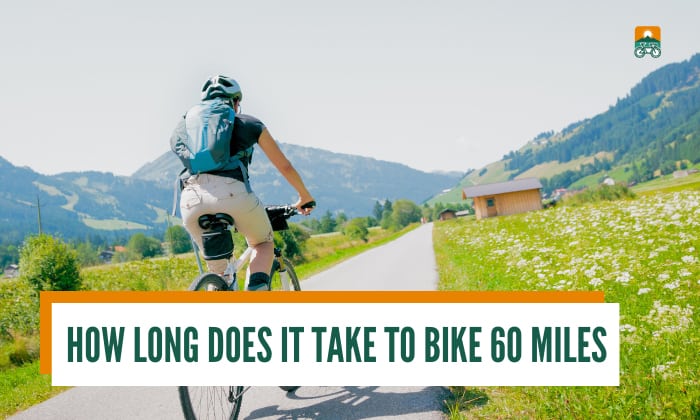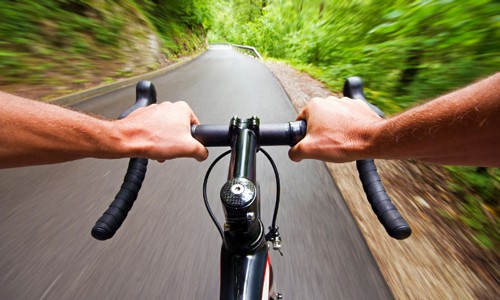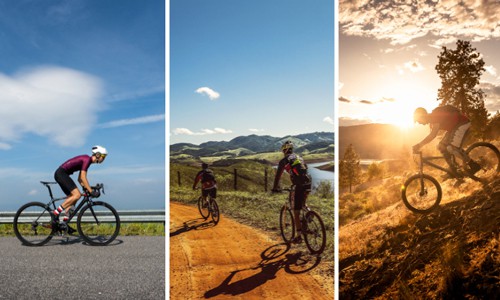Speed is often a central topic when it comes to cycling-related discussions. However, long-distance rides involve more than just speed, as other factors affect the time it takes to travel a set distance. But how long does it take to bike 60 miles?
On average, cyclists can clear 60 miles in 4 to 5 hours, while veterans with better conditioning could clear them faster at 3 hours. However, other factors also come into play.
Keep reading to learn more.
Table of Contents
How Long to Finish Cycling 60 Miles
A 60-mile ride or the metric century is something you will take on as you work toward the goal of completing a 100-mile ride. The metric century is so called because it is 100 km long, which converts to around 62 miles.
Average cyclists could clear it in 4 to 5 hours, while experienced riders could probably do so in just 3. If you’re going at a relaxed pace, the trip will take about 6 hours.
Such a ride is shorter than the century but still a challenge, and is not something beginners can clear in a day. It takes time to build up your body and skills to overcome such a hurdle.
Factors Affecting 60-mile Bike Ride Duration
Different factors come together to influence the ride time to finish a 60-mile distance. It’s difficult to accurately predict an outcome, but it helps to know what to look out for when trying to improve performance.
1. Speed
This is an obvious factor, since higher speeds mean more distance covered. Some bikes are faster than others, and I have underestimated this fact in the past by borrowing a friend’s MTB on flats.
It did not go well because a road bike would have been more suitable for my paved route. Instead of finishing 60 miles in four hours, it took me around 20% more time (4.8 hours).
Sustaining speed is another important angle that may be overlooked. Even if you can cycle 20mph, maintaining that pace is another matter entirely. Most experienced cyclists will attest to this, as do I.
This is where the next item on our list comes into play, especially on hours-long rides.
2. Fitness and Skill level
Endurance is key for long rides; the better your fitness, the easier it is to sustain faster speeds. There’s also the matter of recovery and how well you can maintain a proper riding position for long periods.
Correctly gauging your energy can be the difference between finishing strong and not making it to the end at all. It’s best to formulate a strategy after testing your limits through ample training and preparation.
The general recommendation is to keep your heart rate at 65 to 80 percent throughout the ride to avoid tiring out too quickly.
Age can be a factor here as well, since the performance of older people, those aged 40 and up, tends to drop when it comes to their average cycling speed.
However, training usually trumps age in this regard, and it’s unlikely for a 21-year-old with no training to finish faster than a 45-year-old with 25 years of riding experience.
3. Terrain and Riding Conditions
Flats are easier to clear faster, but at long distances, it’s usually hard to find stretches of road that are only flat.
Steep climbs are unavoidable, and these will affect your biking time; they not only slow you down but can also cause you to run out of steam if you neglect planning how to tackle them.
Familiarize yourself with your route and plan accordingly by adjusting the bike gears according to the terrain. Strategizing your ride and pacing yourself well always delivers better results compared to just firing away until you’re out of ammo.
It’s also recommended to take the weather into consideration and avoid hot or windy days.
Time Completion Table
| Duration of Riding 60 miles based on speed | ||
| Speed in mph | Average time to clear 60 miles | Notes |
| 10 | 6 hrs | ● Top average speed for beginners |
| 15 | 4 hrs | ● Average speed for people aged 45 to 50 |
| 20 | 3 hrs | ● The highest average speed among all age groups of cyclists; for ages 25 to 35 |
| 25 | 2 hrs 24 mins | ● The average cycling speed of men’s Tour de France winners |
Related: Average time to bike: 13 Miles, 40 Miles, 50 miles.
Tips for Effective Biking on Long Rides
- Create effective fuelling strategies, including what to eat and drink
- Save strength for climbs and the latter half of the ride.
- Conserve energy by grouping up and taking turns biking at the front.
- Shift cycling positions to stretch your legs.
- Don’t take long breaks; pedal lighter instead.
Conclusion
How long does it take to bike 60 miles? Now you have a general idea of the riding duration it takes, including what major factors affect your ride time. Regardless of your performance, what’s important is to keep working hard to improve yourself.
Have you tried cycling a distance of 60 miles or more? What do you think was the biggest factor that affected your performance? Tell us all about your riding experiences in the comments section below.
Always ride safely.

“Bike commuting should be the trend for the next few years, and it is a convenient and eco-friendly way for us to travel. And we are here to make it a bit less troublesome for people who want to maintain their vehicle for a long time. So, the content I expect to put out here is offering help for bikers who are facing issues with parts of their bikes once in a while. Let’s have fun and protect the environment together!”





